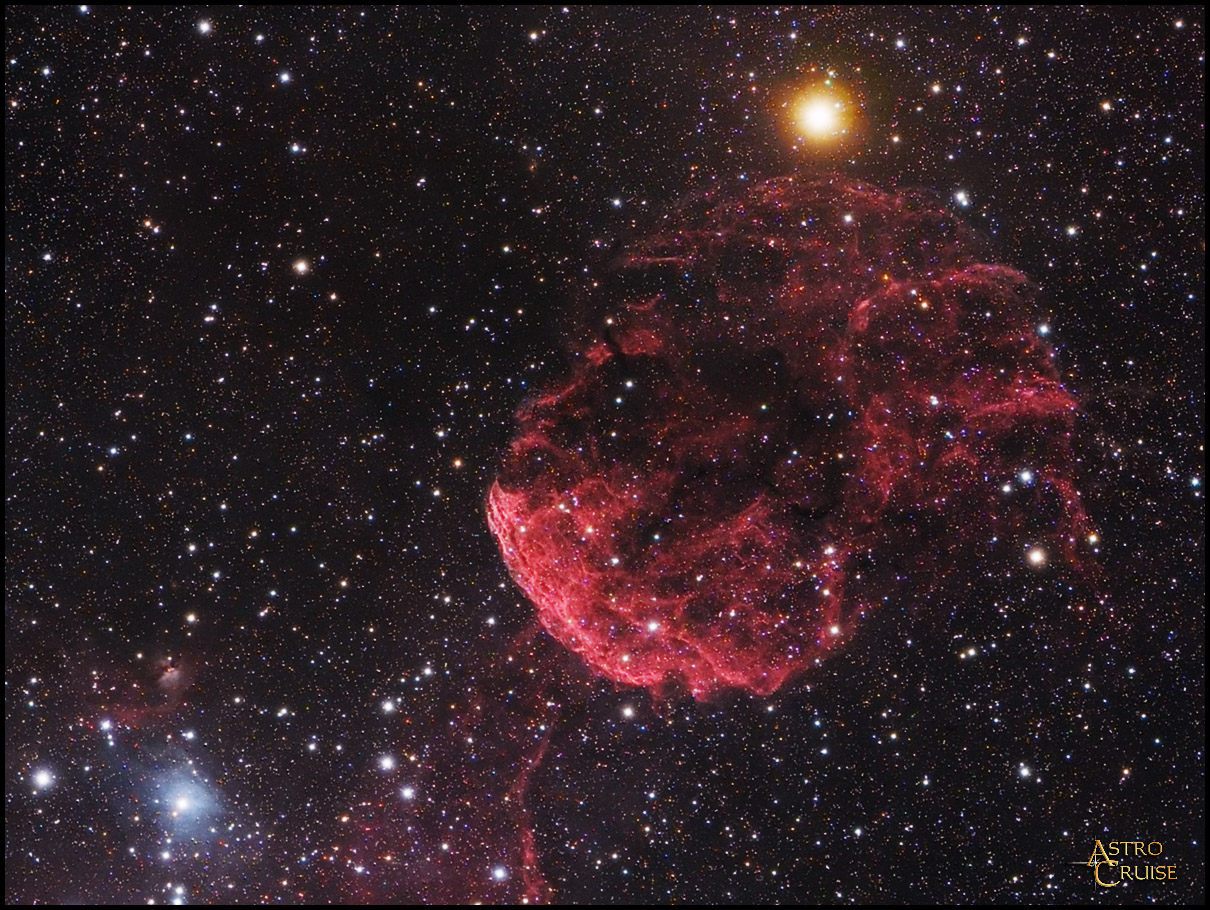
 |
Object data: IC 443, sometimes known as the Jellyfish Nebula, does not look at all like a 'regular' emission nebula - in fact its astonishing structure is the aftermath of a star which exploded some 8000 years ago. Thus it is a supernova remnant and shares the same characteristics as other noteworthy examples such as the Crab Nebula, Simeis 147, both separated by only 10 degrees from this object, and the Veil Nebula. Even so, the structure of IC 443 is remarkable - unlike these other examples the gas filaments do not exhibit regular outwards expansion, rather we see a compression effect to the east (lower left in this image) and exaggerated expansion to the west side. This is due to the shock waves colliding with a molecular front, creating both the compression front and the 'blowback' of billowing strands on the distant side. The bright golden star to the west (above in this image) is Eta Geminorum (Propus). IC 443 is estimated to be some 5000 light years from earth.
Date: 21/02/09
Location: Southern France
Optics: Takahashi FSQ-106ED working at f/5
Mount: AP 900 GTO on Portable Pier
Camera: SBIG STL-11K, SBIG LRGBC filter set, -30°C
Guiding: Integral STL-11K autoguider
Exposure: LRGB Seq: 12x 10 minutes; 3x 10 : 6.5 : 10 minutes (binned 2x2).Processing: Image acquisition and initial processing was done using Maxim DL, subsequent processing was done using RegiStar and Photoshop.
Notes: Unexpectedly, it was possible to make a good image of IC 433 from just a crop of the complete image of IC 444 / 443 - a testament to the quality of the Takahashi FSQ-106ED - nonetheless I plan to capture IC 443 at longer focal length to depict the remarkable structure in greater detail.
|
|
|
|